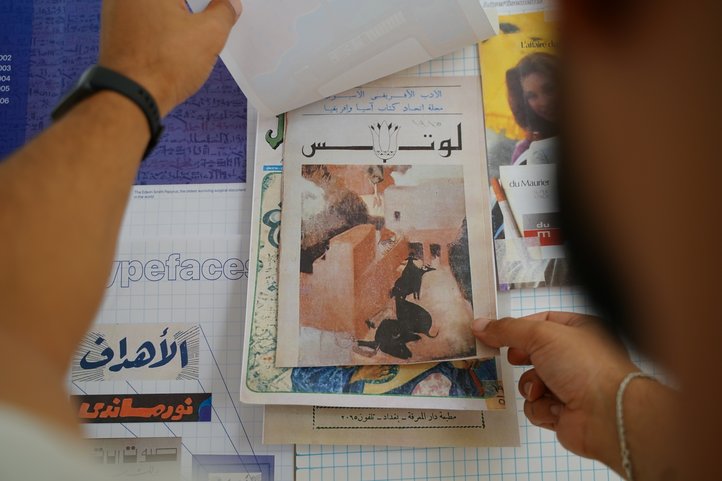Aktuelle Kurse
Alle öffnen
- Wikizine #Numbers – Editorial Illustration zu Mathematiker*innen Voraussichtlicher Inhalt der Lehrveranstaltung: Was macht eine*n gute*n Illustrator*in aus? Die Antwort auf diese Frage fällt je nach Perspektive unterschiedlich aus. Als gute*r Illustrator*in gilt, wer schwierige – oder auf den ersten Blick uninteressante – Themen auf eigene Weise visuell aufbereitet und so eine offene Kommunikation mit den Leser*innen schafft. (Selbstverständlich ist dies meine persönliche Definition.) Gerade Mathematik eignet sich dafür hervorragend: Zwar sind wir täglich von Zahlen umgeben, doch zur Mathematik selbst halten viele Abstand. In diesem Kurs setzen sich die Kursteilnehmer*innen in Gruppen mit ausgewählten Wikipedia-Artikeln zu bedeutenden Mathematiker*innen auseinander. Diese Artikel beinhalten deren Leben, Werk und Theorien. Jede Gruppe recherchiert den Text und entwickelt darauf basierend Editorial Illustrationen. Ziel ist es, den Text und mathematische Inhalte auf experimentelle und zugleich zugängliche Weise visuell zu vermitteln. Durch praktische Übungen lernen die Teilnehmer*innen die Grundlagen der Komposition von Text und Illustration kennen und entwickeln eigene Konzepte für Editorial Illustrationen. Am Ende des Kurses reicht jede Gruppe ein fertiges Layout ein – mindestens zwei A3-Einzelseiten (ein A2-Spread), maximal vier A3-Einzelseiten (zwei A2-Spreads). Alle Beiträge werden zu einem gemeinsamen Magazin-Exemplar zusammengeführt. (Dieses Endformat kann je nach Kursumgebung angepasst werden.) Organisatorische Hinweise: * Alle Illustrationen werden grundsätzlich analog erstellt. Pro Gruppe ist ein Laptop für das Layout erlaubt. * Der Kurs findet grundsätzlich auf Deutsch statt, kann aber je nach Bedarf auf Englisch wechseln. * Dieser Workshop hat den gleichen Lehrplan wie mein anderer Workshop. --- What Makes a Good Illustrator? The answer to this question varies depending on one’s perspective. A good illustrator is someone who takes on difficult – or seemingly uninteresting – topics and visually interprets them in their own way, thereby opening up a communication with the audience. (Of course, this is a personal definition.) Mathematics lends itself particularly well to this: although we are surrounded by numbers every day, many people tend to keep their distance from the subject itself. In this course, participants will work in groups and engage with selected Wikipedia articles on influential mathematicians. These texts include information about the individuals’ lives, achievements, and theories. Based on their research, each group will develop an editorial illustration. The goal is to translate mathematical content and biographical texts into visual form in a way that is both experimental and accessible. Through hands-on exercises, participants will learn the basics of composing text and image and develop their own concepts for editorial illustrations. At the end of the course, each group will submit a finished layout – a minimum of two A3 single pages (one A2 spread) and a maximum of four A3 single pages (two A2 spreads). All group contributions will be compiled into one collective magazine. The final format may vary depending on the course environment. Organizational Notes: * All illustrations will be created using analog techniques. One laptop per group is allowed for layout purposes. * The course will primarily be held in German, but may switch to English if needed. * This workshop has the same curriculum as my other workshop.
- Wikizine #Numbers – Editorial Illustration zu Mathematiker*innen, Klasse 2 Voraussichtlicher Inhalt der Lehrveranstaltung: Was macht eine*n gute*n Illustrator*in aus? Die Antwort auf diese Frage fällt je nach Perspektive unterschiedlich aus. Als gute*r Illustrator*in gilt, wer schwierige – oder auf den ersten Blick uninteressante – Themen auf eigene Weise visuell aufbereitet und so eine offene Kommunikation mit den Leser*innen schafft. (Selbstverständlich ist dies meine persönliche Definition.) Gerade Mathematik eignet sich dafür hervorragend: Zwar sind wir täglich von Zahlen umgeben, doch zur Mathematik selbst halten viele Abstand. In diesem Kurs setzen sich die Kursteilnehmer*innen in Gruppen mit ausgewählten Wikipedia-Artikeln zu bedeutenden Mathematiker*innen auseinander. Diese Artikel beinhalten deren Leben, Werk und Theorien. Jede Gruppe recherchiert den Text und entwickelt darauf basierend Editorial Illustrationen. Ziel ist es, den Text und mathematische Inhalte auf experimentelle und zugleich zugängliche Weise visuell zu vermitteln. Durch praktische Übungen lernen die Teilnehmer*innen die Grundlagen der Komposition von Text und Illustration kennen und entwickeln eigene Konzepte für Editorial Illustrationen. Am Ende des Kurses reicht jede Gruppe ein fertiges Layout ein – mindestens zwei A3-Einzelseiten (ein A2-Spread), maximal vier A3-Einzelseiten (zwei A2-Spreads). Alle Beiträge werden zu einem gemeinsamen Magazin-Exemplar zusammengeführt. (Dieses Endformat kann je nach Kursumgebung angepasst werden.) Organisatorische Hinweise: * Alle Illustrationen werden grundsätzlich analog erstellt. Pro Gruppe ist ein Laptop für das Layout erlaubt. * Der Kurs findet grundsätzlich auf Deutsch statt, kann aber je nach Bedarf auf Englisch wechseln. * Dieser Workshop hat den gleichen Lehrplan wie mein anderer Workshop. --- What Makes a Good Illustrator? The answer to this question varies depending on one’s perspective. A good illustrator is someone who takes on difficult – or seemingly uninteresting – topics and visually interprets them in their own way, thereby opening up a communication with the audience. (Of course, this is a personal definition.) Mathematics lends itself particularly well to this: although we are surrounded by numbers every day, many people tend to keep their distance from the subject itself. In this course, participants will work in groups and engage with selected Wikipedia articles on influential mathematicians. These texts include information about the individuals’ lives, achievements, and theories. Based on their research, each group will develop an editorial illustration. The goal is to translate mathematical content and biographical texts into visual form in a way that is both experimental and accessible. Through hands-on exercises, participants will learn the basics of composing text and image and develop their own concepts for editorial illustrations. At the end of the course, each group will submit a finished layout – a minimum of two A3 single pages (one A2 spread) and a maximum of four A3 single pages (two A2 spreads). All group contributions will be compiled into one collective magazine. The final format may vary depending on the course environment. Organizational Notes: * All illustrations will be created using analog techniques. One laptop per group is allowed for layout purposes. * The course will primarily be held in German, but may switch to English if needed. * This workshop has the same curriculum as my other workshop.
- Mathematical Super-heroes – Character design for science 1 (Block A) In collaboration with the centre for mathematics at Lund University and Modellregion Industriemathematik Bremen (MOIN), we will create a super-heroe universe together, based on mathematical concepts. Our aim is to lower the threshold to learn mathematics both for children and adults, but also, not less important, for the mathematicians to get acquainted with the art of illustration. At the beginning of the semester Babette Semmer will explore with you the ways in which pose, gesture and facial expression of a character transports emotion. We will analyse many art historical examples and practice capturing the essence of different feelings. Acting and embodying an emotional state can help us feel how a character might hold themselves, in order to better capture it in drawing. We will serve each other as live models, use mirrors and examples from books, films and photographs as source material, as well as our imagination and memory. In addition we will practice reducing and freeing up our mark-making, so that our drawing language may reach a state of being both lose and precise at the same time - because this is where the magic of depiction happens: when a flick of the brush reads as a raised eyebrow, a dot of graphite as a frown. After the introduction a two day’s workshop with will follow were we, guided by Kristina Juter (professor in mathematical didactics) and Magnus Aspenberg (associate professor in dynamic systems) and Adam Nilsson (cognitive semiotician and coordinator) approach mathematics from the illustration perspective. In the rest of Block A we will practice the basics of character design, through a series of different exercises focusing on both the characters themselves and their environment. --- In collaboration with the centre for mathematics at Lund University and Modellregion Industriemathematik Bremen (MOIN), we will create a super-heroe universe together, based on mathematical concepts. Our aim is to lower the threshold to learn mathematics both for children and adults, but also, not less important, for the mathematicians to get acquainted with the art of illustration. At the beginning of the semester Babette Semmer will explore with you the ways in which pose, gesture and facial expression of a character transports emotion. We will analyse many art historical examples and practice capturing the essence of different feelings. Acting and embodying an emotional state can help us feel how a character might hold themselves, in order to better capture it in drawing. We will serve each other as live models, use mirrors and examples from books, films and photographs as source material, as well as our imagination and memory. In addition we will practice reducing and freeing up our mark-making, so that our drawing language may reach a state of being both lose and precise at the same time - because this is where the magic of depiction happens: when a flick of the brush reads as a raised eyebrow, a dot of graphite as a frown. After the introduction a two day’s workshop with will follow were we, guided by Kristina Juter (professor in mathematical didactics) and Magnus Aspenberg (associate professor in dynamic systems) and Adam Nilsson (cognitive semiotician and coordinator) approach mathematics from the illustration perspective. In the rest of Block A we will practice the basics of character design, through a series of different exercises focusing on both the characters themselves and their environment.
Veranstaltungen

